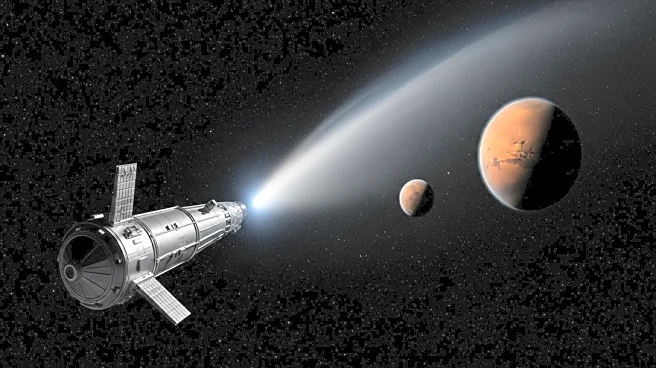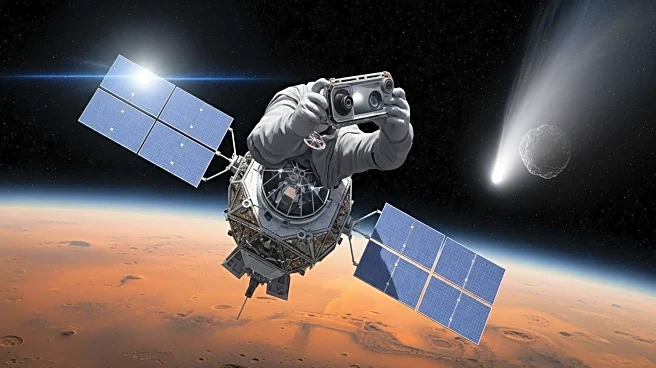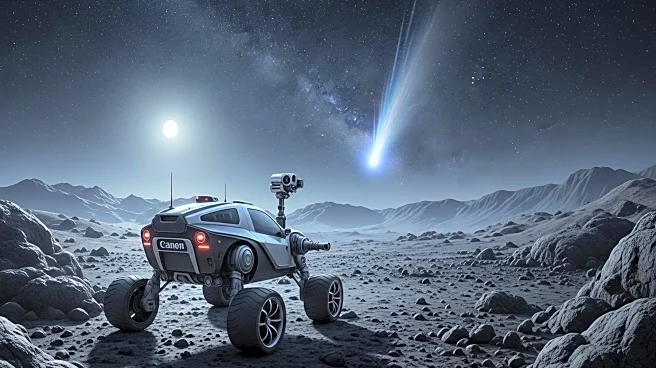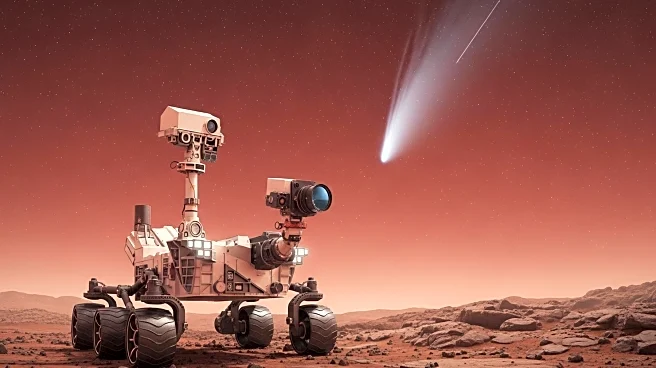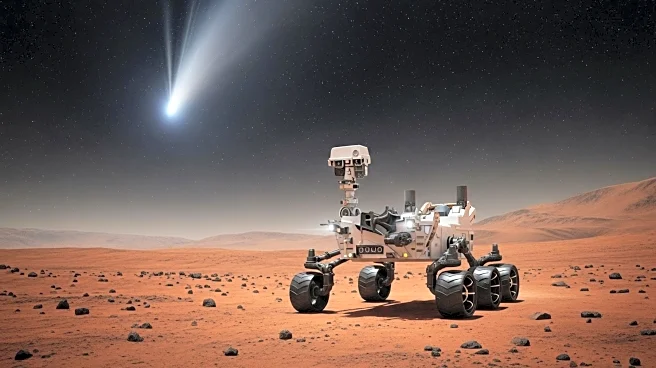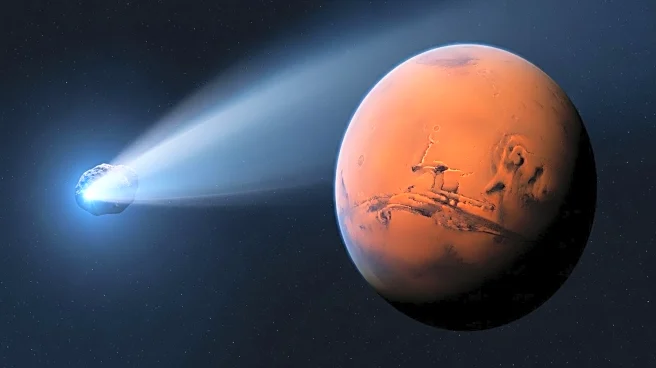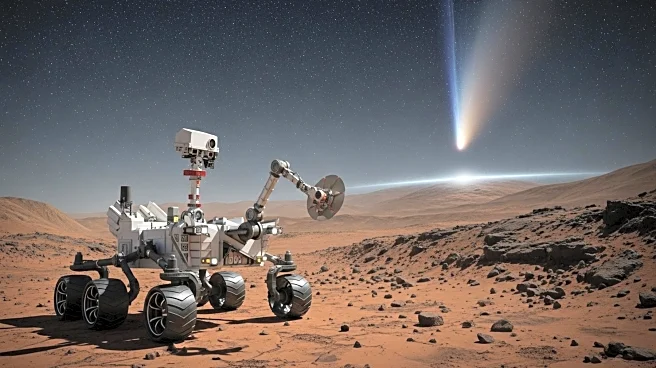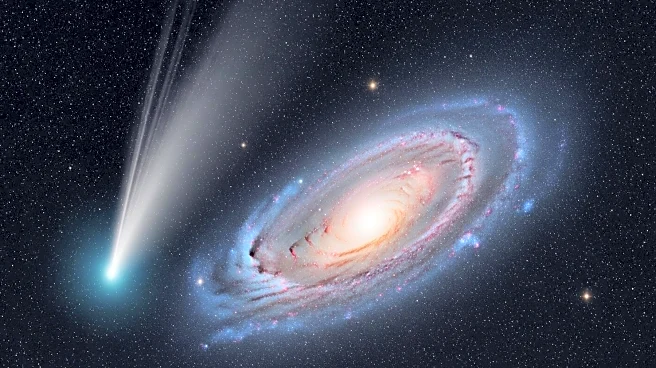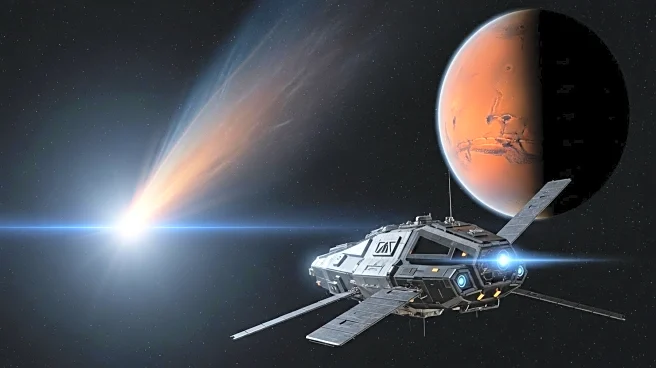What's Happening?
An interstellar comet named 3I/ATLAS recently made its closest approach to Mars, allowing a fleet of international spacecraft to observe it. This comet is the third interstellar object detected in our Solar System, following 1I/ʻOumuamua and 2I/Borisov. The comet's trajectory will bring it to perihelion, its closest approach to the Sun, at the end of the month. Observations were made by NASA's Perseverance rover, Mars Reconnaissance Orbiter, and European missions such as Mars Express and ExoMars Trace Gas Orbiter. The James Webb Space Telescope and Hubble Space Telescope have provided the best views, helping astronomers estimate the comet's size, though the estimates remain imprecise.
Why It's Important?
The observation of 3I/ATLAS is significant as it provides scientists with a rare opportunity to study interstellar objects, which can offer insights into the composition and behavior of celestial bodies from outside our Solar System. Understanding these objects can enhance knowledge about the formation and evolution of planetary systems. The data collected could potentially inform future missions aimed at visiting or studying interstellar objects more closely, contributing to advancements in space exploration and technology.
What's Next?
As 3I/ATLAS approaches perihelion, astronomers will continue to monitor its trajectory and characteristics using available telescopes and spacecraft. The comet's passage offers a chance to refine techniques for detecting and studying interstellar objects. Future missions may be designed to intercept or closely observe such objects, expanding our understanding of the universe beyond our Solar System.
Beyond the Headlines
The study of interstellar objects like 3I/ATLAS raises questions about the potential for life beyond Earth, as these objects may carry organic compounds or other materials that could inform astrobiology. Additionally, the technological advancements required to observe and potentially visit these objects could drive innovation in spacecraft design and international collaboration in space exploration.

